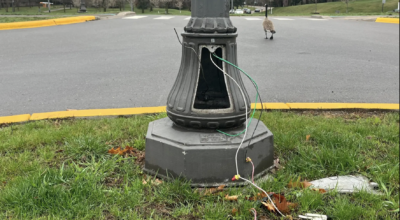Hundreds evacuated in Duluth area; floodwaters recede
Published 3:20 pm Saturday, June 23, 2012
MINNEAPOLIS — As floodwaters in northeastern Minnesota receded Friday, state officials got a closer look at some of the damage and kept a watchful eye on communities downriver of Duluth — where hundreds of people have been evacuated.
The St. Louis River crested earlier in the week, but a chance for rain and thunderstorms Saturday could create problems for storm drainage systems and infrastructure already overwhelmed by this week’s record rainfall.
“We are looking at some rain in the forecast, so we are definitely not out of the woods yet,” said Amanda Graning, a meteorologist with the National Weather Service in Duluth. “Any kind of strong thunderstorm could pose some more problems, but they should be short-term problems.”
Doug Neville, a spokesman for Homeland Security and Emergency Management, said authorities were focusing Friday’s efforts on southern Carleton County and northern Pine County, as water worked its way downriver.
Rutledge seemed to be in the path of rising water Friday, Neville said.
“We have staff en route to Rutledge to assess what is going on there,” Neville said.
Damages from the flood are expected to exceed $100 million, and flood warnings remained in effect Friday.
Residents who evacuated Barnum, which has a population of about 590, were being allowed back 4P. 3
into the city Friday as water levels went down, said Dan Danielson, an investigator with the Carleton County Sheriff’s Office. Danielson did not have an exact number of people evacuated, but said only part of the city was under water. Neville said the entire city had been evacuated a day earlier.
Thomson, which has about 170 residents, was also evacuated Thursday, and people remained displaced Friday.
Danielson said the sheriff’s office recommended that everyone in Thomson evacuate “because of the potential for danger and the high amounts of water.” The situation remained unchanged on Friday. Five Thomson residents had to be rescued by U.S. Coast Guard helicopter a day earlier.
About 25 households were evacuated in Moose Lake, too, where some neighborhoods were accessible only by boat. Floodwaters engulfed the high school, an RV park and campground.
About 200 residents of Duluth’s Fond du Lac neighborhood also remained displaced Friday. Duluth police spokesman Jim Hansen said officials were working on a plan to allow residents to return by Monday.
“We are certainly empathetic to those folks,” Hansen said.
Neville said authorities recommend evacuations based on safety issues, such as dangerous rising water, inaccessible roads or a loss of infrastructure. Minnesota does not allow mandatory evacuations.
After touring Duluth, Proctor, Carlton and Moose Lake, Sen. Amy Klobuchar described being startled by the severity of the damage.
Klobuchar said she spoke with the administrator of the Federal Emergency Management Administration a day earlier. “I said to him, ‘Just because no one died doesn’t mean there’s not humongous damage,”’ Klobuchar said.
When natural disasters cause more than $8 million in damage the federal government contributes 75 percent toward repairing uninsured public infrastructure. Klobuchar said that threshold would be easily met. She said FEMA officials would meet with state officials in St. Paul on Monday, and would be in Duluth by Tuesday to begin assessments.
Klobuchar said some business owners could be eligible for Small Business Association loans. Sometimes natural disaster victims also qualify for personal assistance, but it’s a higher bar to be eligible.
Most of the residents in the affected cities do not have flood insurance. According to the website of the National Flood Insurance Program, only 111 homes in Duluth had flood insurance policies in force as of April 30. Only three homes in Moose Lake and one home in Carlton had active policies, the website said.
Sen. Al Franken and Rep. Chip Cravaack also toured Duluth on Friday.
The rise and fall of floodwaters has been unpredictable after as much as 10 inches of rain fell in some areas on Tuesday and Wednesday.
The St. Louis River was 15.9 feet Friday — more than 5 feet above flood stage — at Scanlon; it crested at 16.62 feet Thursday. The record crest was 15.8 feet, set in 1950.
“There is still significant flooding going on, but it does appear the rivers have crested and are starting their way back down,” Graning said.
It was recommended that people have no contact with water in Lake Superior due to runoff from the floods.




